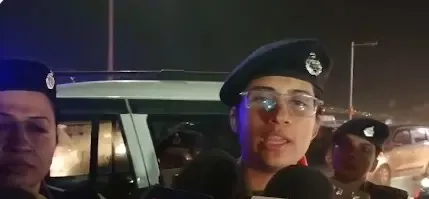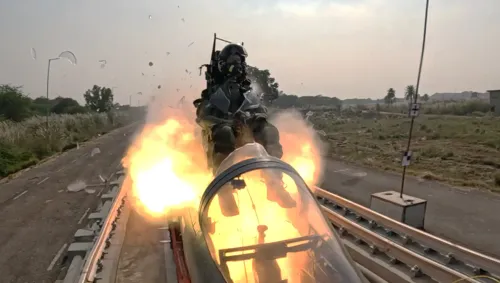Have 346 CISF Commandos Been Trained by the Indian Army After Operation Sindoor to Secure High-Risk Areas?

Synopsis
Key Takeaways
- 346 CISF personnel trained by the Indian Army.
- Focus on urban warfare, drone tactics, and crisis response.
- Temporary pause in training due to Bihar elections.
- Union Home Ministry approved increase in CISF strength.
- Significant technological transformation anticipated.
New Delhi, Oct 14 (NationPress) Following Operation Sindoor, a powerful response to the Pakistan-sponsored terror attack in Pahalgam on April 22, a total of 346 personnel from the Central Industrial Security Force (CISF) have undergone training with the Indian Army to tackle high-intensity terror threats.
As per reliable security sources, the first batch of 120 CISF Quick Response Team (QRT) commandos received training from the Southern Command in Pune, while 91 personnel were trained under the Northern Command in Pulwama, Jammu and Kashmir.
The third batch included 30 personnel, and the fourth batch comprising 101 commandos completed their training in Pune by late September.
“Importantly, these QRT members had already completed a rigorous six-month in-house training with CISF before joining the Army’s specialized module,” an official stated.
Officials indicated that this specialized training encompasses urban and jungle warfare tactics, engagement in high-risk zones, and integrated drone warfare strategies, thereby enhancing the Army-grade reflexes and combat readiness of CISF commandos.
“This training ensures that CISF personnel can respond with military precision to emergencies at airports, nuclear facilities, governmental establishments, and even Parliament,” confirmed an official.
With the Bihar elections approaching next month and nearly 500 CAPF companies being mobilized, the subsequent phase of CISF training has been temporarily halted.
In a significant capacity expansion, the Union Home Ministry approved an increase in CISF personnel from 1.62 lakh to 2.2 lakh in August this year.
Approximately 15 percent of the force comprises QRT units, and sources indicate that the goal is to align their combat efficiency with that of the Indian Army by 2028.
To enhance firepower, the CISF, currently equipped with INSAS, AK-47s, and sniper platforms, is expected to receive AK-203 rifles along with new fold-butt rifles designed for close-quarter engagements.
The force has also ordered 20,000 Trichy Assault Rifles (TAR).
Most of the newly trained commandos have already been deployed at sensitive locations, including airports in Jammu, Kashmir, Leh, and other critical installations.
With the government advocating for ‘Aatmanirbhar Bharat’ in defense production and increasing involvement of the private sector, the CISF is anticipated to undergo a significant technological overhaul in the coming months.
Drones, which have emerged as a pivotal element in modern warfare—evident during the recent India-Pakistan conflict, the Russia-Ukraine war, and the concluded Israel-Hamas conflict—will see the CISF potentially inducting around 350 drones in the near future, thus fortifying commandos stationed at sensitive zones.










